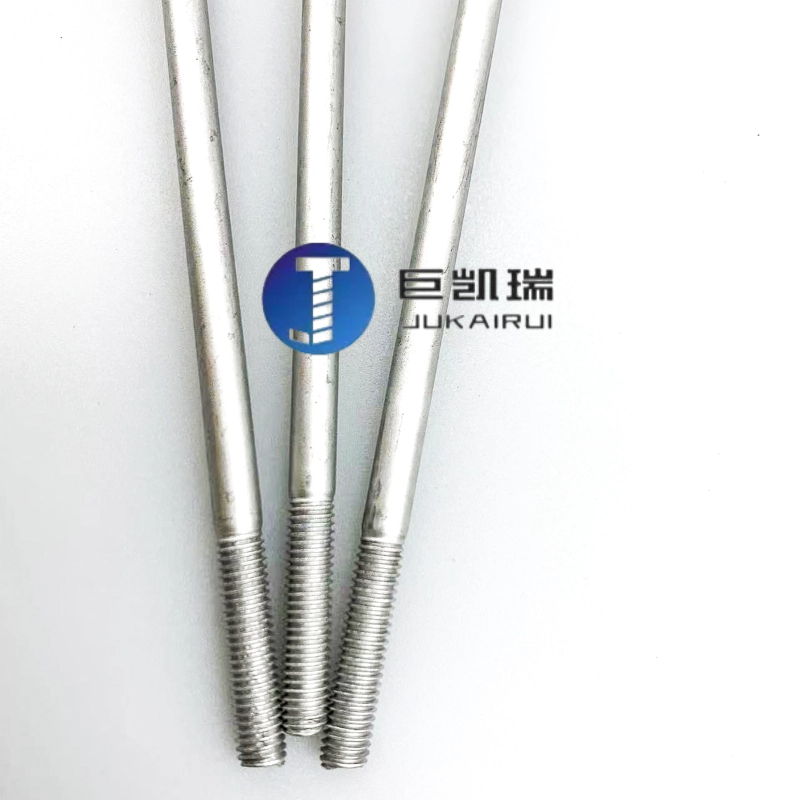Release time:2020-01-16 18:44 Browse:

In many industrial and daily life scenes, lengthening screws have a wide range of applications. However, with the passage of time and the impact of the use environment, they may become contaminated with various dirt, which requires us to carry out proper cleaning. Cleaning extension screws is not only to ensure that they are clean and tidy, but more importantly, to avoid damaging the screw surface to maintain its performance and service life. Next, you will be detailed about several effective cleaning methods.
1. Preparation before cleaning
Before you start cleaning, it is important to know the material of the screws. Screws of different materials have different tolerance to cleaning methods and cleaners. For example, carbon steel screws are relatively easy to rust, and more attention may be paid to anti-rust treatment when cleaning; Stainless steel screws have better corrosion resistance, but they still need to be used with caution for some highly corrosive cleaners. In addition, it is important to have the right cleaning tools available, including a soft brush (such as a clean toothbrush or a dedicated industrial brush), a microfiber cloth, a compressed air tank, a suitable cleaning agent (such as a metal oil cleaner, rust remover, isopropyl alcohol, etc.), and a container for soaking screws (such as a plastic tub).
Second, physical cleaning methods
(1) Dry brush method
Dry brushing is a simple and effective initial cleaning method, especially for screws with only a small amount of dust and loose debris on the surface.
Choose a soft brush, soft and not easy to fall off, to prevent scratching the screw surface during cleaning. Place the screw smoothly on the work surface, and gently brush the screw surface with a soft brush. When brushing the thread part, be sure to follow the direction of the thread, so as to avoid brushing impurities such as dust into the depth of the thread, but also to protect the integrity of the thread to the greatest extent. By gentle and meticulous brushing, the floating dust and impurities on the screw surface are gradually removed, so that the screw presents a relatively clean appearance.
(2) Blowing cleaning method
For some light debris and dust hidden in the cracks or corners of the screws, blowing cleaning method is a good choice.
Use a compressed air tank or air pump with a suitable air nozzle. Hold the screws in place to keep them stable. Then, the air nozzle is aligned with the gap, groove and gap between the screw surface to open the compressed air. The strong airflow will blow away the debris in these hard-to-reach places, allowing all parts of the screw to be cleaned. The advantage of this method is that it is a non-contact cleaning method, which can greatly reduce the possible damage to the screw surface, but also efficiently remove those small impurities that are difficult to clean with a brush.
(3) Wiping and cleaning method
The wipe cleaning method comes in handy when the screw surface is stained or needs further cleaning.
First, prepare a soft, non-shedding cleaning cloth, such as a microfiber cloth or a clean cotton cloth. For minor stains, gently wipe the screw surface directly with a dry cleaning cloth. If the stain is more stubborn, consider using a small amount of mild detergent. For example, isopropyl alcohol is a common cleaning solvent that can be used with caution when there is no special coating on the screw surface and contaminants are difficult to remove. Pour a small amount of isopropyl alcohol onto the cleaning cloth so that the cloth is slightly wet, but be careful not to get too wet so that the liquid does not seep into the inside of the screw. Then, wrap the screw with this cloth, gently rotate and wipe, paying attention to the moderate wiping force to avoid excessive force resulting in scratches on the screw surface. After wiping, wipe again with a clean dry part of the cloth to remove residual detergent and moisture, to ensure that the screw surface is dry and clean, to prevent rust.
Third, chemical cleaning methods
(1) Soaking cleaning method
If the lengthening screw surface is attached with oil, rust and other stubborn stains, soaking cleaning method is a more thorough cleaning method.
Choose the right cleaning solution based on the type of stain. For oil pollution, special metal oil pollution cleaning agent can be used; For rust, rust remover can be selected. If the screw is made of stainless steel and the rust is light, a relatively mild rust remover such as citric acid solution can also be used. Pour the cleaning solution into a suitable container, such as a plastic basin. Then immerse the extension screw completely in the cleaning solution. The soaking time needs to be determined according to the severity of the stain, generally speaking, the oil can be soaked for 15-30 minutes or so to achieve a better effect, while the rust may need to soak for several hours or even longer, the specific can refer to the detergent instructions. During the soaking process, the container can be appropriately shaken to help the stain better dissolve and detach from the screw surface. After soaking, use tweezers or other suitable tools to remove the screws and rinse with plenty of water to thoroughly remove the remaining cleaning solution. Finally, follow the drying steps in the wiping cleaning method and dry the screws with a clean cloth to prevent rust.
(2) Ultrasonic cleaning method
Ultrasonic cleaning method is an efficient and suitable for complex structural screws cleaning method, especially for those with small gaps or internal structure difficult to clean lengthening screws effect is significant.
It is necessary to use a special ultrasonic cleaning machine, and choose the right cleaning solution according to the material and stain of the screw. Put the screw into the cleaning tank of the ultrasonic cleaning machine, and add the appropriate amount of cleaning liquid to ensure that the screw is completely immersed. After opening the ultrasonic cleaning machine, the ultrasonic wave produces high-frequency vibration in the cleaning liquid, which will form tiny bubbles in the liquid, and the bubbles will have a strong impact when they break, which can quickly peel the stains in the screw surface and gap. According to the power of the cleaning machine and the degree of pollution of the screws, set the appropriate cleaning time, generally 5-15 minutes. After cleaning, remove the screws, rinse them with water, and then dry them. This method can achieve deep cleaning without damaging the screw surface and make the screw look new.
4. Precautions after cleaning
After cleaning the extension screw, in order to maintain its good condition and prevent rust or stains again, you can consider taking some protective measures. If the screw will not be used in the short term, you can apply a small amount of anti-rust oil on its surface, but be careful to apply evenly, and do not affect the normal installation and use of the screw. In addition, it is also important to properly store the clean screws, it is best to place them in a dry, ventilated environment, and use a suitable container or packaging for classification storage, to avoid collisions and scratches between screws, so as to protect the surface quality of the screws.
In short, cleaning extension screws need to choose the appropriate cleaning method according to the specific situation, and always pay attention to avoid damaging the screw surface during the cleaning process. Through the correct cleaning and maintenance methods, we can ensure that the extension screws always maintain good performance and appearance, providing a reliable guarantee for the stable operation of various equipment and structures. Whether in industrial production or daily life, these small screws play an important role and deserve our care and cleaning.
# Lengthening screws # Lengthening bolts # Lengthening outer hex screws # Lengthening inner hex screws # fasteners

